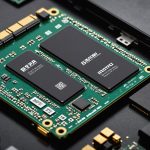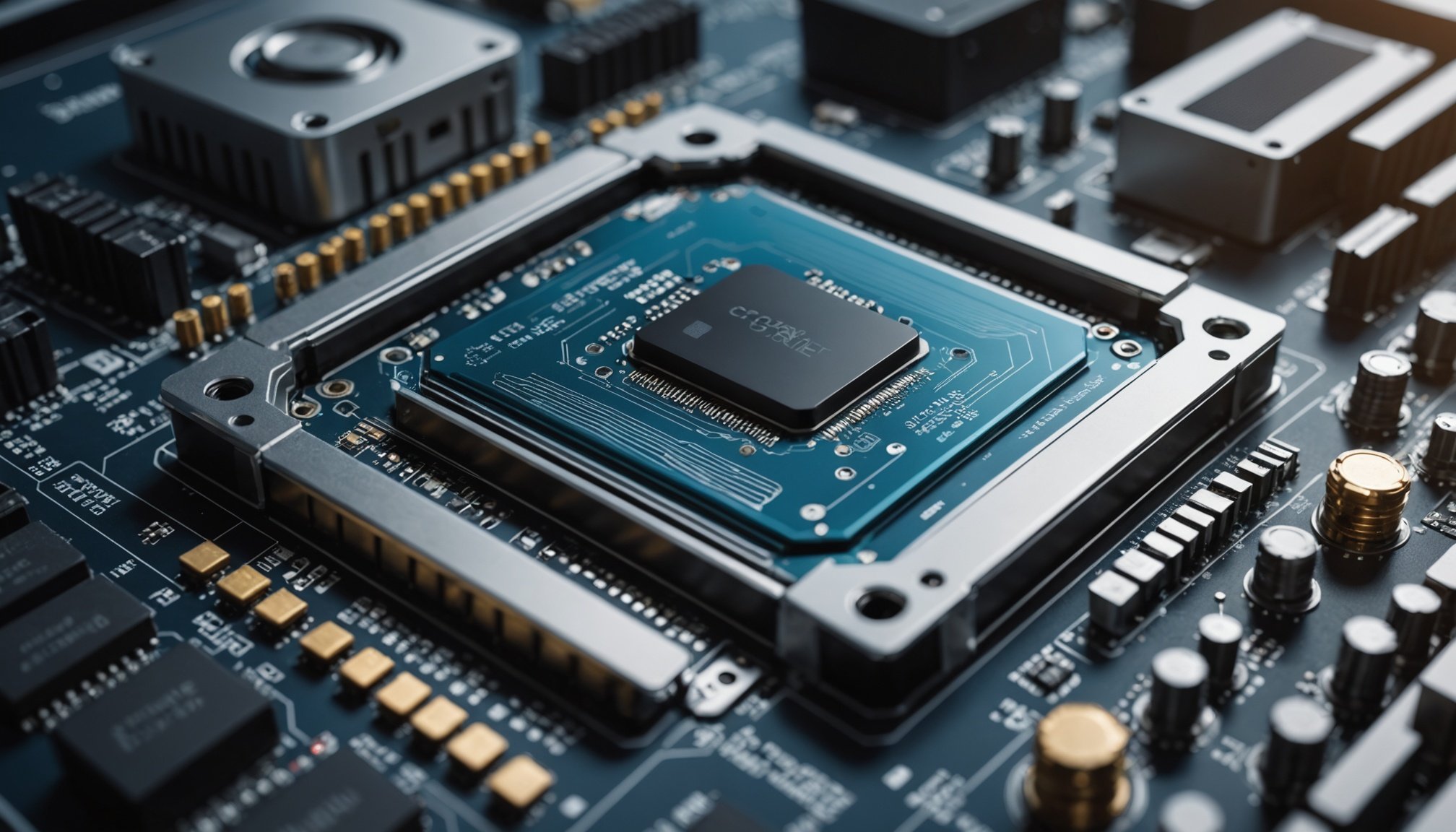Maximizing AI Model Performance: Cost-Effective Strategies for Training on Affordable Hardware
In the rapidly evolving field of artificial intelligence (AI), the pursuit of high-performance models often comes with significant costs, particularly when it involves expensive hardware and cloud services. However, with the right strategies, it is possible to maximize AI model performance without breaking the bank. Here, we will explore cost-effective methods for training AI models on affordable hardware, making AI more accessible and efficient for a wider range of users.
Optimizing Data for Efficient Training
When it comes to training AI models, the quality and preparation of the data are crucial. Here are some key strategies to optimize your data, ensuring it is both cost-effective and efficient:
Topic to read : Navigating AI Compliance: The Ultimate Guide to Adhering to Global Cybersecurity Standards
Data Preprocessing
Data preprocessing is an essential step in preparing your dataset for training. This involves cleaning the data, handling missing values, removing outliers, and normalizing the data. Tools like Python’s Pandas library or R’s dplyr are invaluable for these tasks[3].
- Data Cleaning: Remove noisy or irrelevant data to improve the model’s performance. This step is critical in resource-constrained environments where every bit of data quality counts.
- Feature Selection: Select the most relevant features to reduce the dimensionality of the data and minimize computational resources.
- Feature Extraction: Extract key features from the data to enhance the model’s ability to learn from it.
Data Augmentation
Data augmentation techniques can generate new and diverse data from existing datasets, which can be particularly useful when working with limited data. This approach helps in improving the model’s performance on test data by exposing it to a wider range of scenarios[1].
This might interest you : Transforming Online Shopping: Advanced Machine Learning Solutions for Instant Fraud Detection
- Image Data: For image data, techniques like rotation, flipping, and color jittering can be used.
- Text Data: For text data, techniques such as paraphrasing, synonym replacement, and back-translation can be employed.
- Time-Series Data: For time-series data, techniques like time warping and magnitude warping can be applied.
Model Optimization Techniques
Optimizing the model itself is another critical aspect of cost-effective AI development. Here are some techniques to make your models more efficient:
Model Compression
Model compression methods are designed to reduce the size of the model, making it faster and more efficient to run on resource-constrained hardware.
- Pruning: Remove unnecessary weights and connections in the neural network to reduce its size.
- Quantization: Represent model weights and activations using fewer bits, reducing memory usage and computational costs.
- Knowledge Distillation: Train a smaller model (the student) to mimic the behavior of a larger, pre-trained model (the teacher)[1].
Hyperparameter Optimization
Hyperparameter optimization is the process of finding the best set of hyperparameters for your model. Here are some approaches:
- Grid Search: An exhaustive search through a manually specified subset of the hyperparameter space. While simple, it can be computationally expensive[2].
- Random Search: Randomly sample hyperparameters from the search space, which can be more efficient than grid search, especially in high-dimensional spaces[2].
- Bayesian Optimization: Uses a probabilistic model to search for the optimal hyperparameters, balancing exploration and exploitation[2].
System Optimization for Efficient Training and Inference
System-level optimizations can significantly enhance the performance of AI models on affordable hardware.
Hardware Acceleration
Utilizing hardware accelerators such as GPUs, TPUs, or specialized AI chips can accelerate both training and inference.
- GPUs: General-purpose GPUs are widely used for deep learning tasks due to their parallel processing capabilities.
- TPUs: Tensor Processing Units, developed by Google, are specifically designed for machine learning workloads and offer high performance at lower costs compared to traditional GPUs.
- AI Chips: Specialized AI chips like those from NVIDIA and Intel are optimized for AI workloads and can provide significant performance boosts[1].
Software Frameworks
Using efficient software frameworks can also streamline the training and inference processes.
- TensorFlow and PyTorch: These popular frameworks offer optimized libraries and tools for training and deploying AI models. They also support various hardware accelerators, making it easier to leverage affordable hardware[3].
- Open-Source Tools: Tools like OpenVINO and TensorFlow Lite are designed to optimize model performance on edge devices, reducing the need for high-end hardware.
Cost-Effective Hardware Solutions
When it comes to affordable hardware, there are several options that can provide high performance without the hefty price tag.
Cloud-Based Solutions
Cloud providers like Google Cloud, AWS, and Azure offer cost-effective solutions for training AI models.
- Google Cloud AI Platform: Provides managed services for training and deploying AI models, with options for using preemptible VMs to reduce costs.
- AWS SageMaker: Offers a fully managed service for building, training, and deploying machine learning models, with cost-effective pricing models.
- Azure Machine Learning: Allows for scalable and cost-effective training of AI models using Azure’s cloud infrastructure[3].
On-Premise Hardware
For those who prefer to keep their data and computations on-premise, there are affordable hardware options available.
- Raspberry Pi and Edge Devices: These devices are highly affordable and can be used for edge AI applications, reducing the need for cloud services and minimizing latency.
- Budget GPUs: GPUs like the NVIDIA GeForce GTX 1660 or AMD Radeon RX 5600 XT offer a balance between performance and cost, making them suitable for many AI tasks.
Practical Use Cases and Examples
Here are some practical use cases and examples of how these strategies can be applied:
Autonomous Vehicles
In the development of autonomous vehicles, real-time processing is crucial. Using edge AI and optimized models can ensure that the vehicle’s AI system can make decisions quickly and accurately without relying on cloud services.
- Data Optimization: Use data augmentation to generate diverse scenarios for training the model.
- Model Compression: Employ model pruning and quantization to reduce the model size and improve inference speed.
- Hardware Acceleration: Utilize TPUs or specialized AI chips to accelerate real-time processing.
Virtual Reality Games
For virtual reality (VR) games, low latency and high performance are essential. Here’s how you can optimize AI models for VR applications:
- System Optimization: Use software frameworks like TensorFlow or PyTorch to optimize model performance on GPUs.
- Hardware Acceleration: Leverage high-performance GPUs or cloud-based solutions to ensure smooth and responsive gameplay.
- Cost-Effective Hardware: Consider using budget GPUs or cloud services with preemptible VMs to reduce costs.
Table: Comparison of Hyperparameter Optimization Methods
| Method | Description | Advantages | Disadvantages |
|---|---|---|---|
| Grid Search | Exhaustive search through a manually specified subset of the hyperparameter space | Simple to implement, embarrassingly parallel | Computationally expensive, suffers from the curse of dimensionality |
| Random Search | Randomly sample hyperparameters from the search space | More efficient than grid search, allows inclusion of prior knowledge | May not explore the entire space effectively |
| Bayesian Optimization | Uses a probabilistic model to search for the optimal hyperparameters | Balances exploration and exploitation, efficient in fewer evaluations | Can be complex to implement, requires a good understanding of probabilistic models |
| Gradient-Based Optimization | Optimizes hyperparameters using gradient descent | Can handle large numbers of hyperparameters, efficient for certain models | Limited to differentiable models, requires careful initialization |
| Evolutionary Optimization | Uses evolutionary algorithms to search the hyperparameter space | Can handle noisy black-box functions, robust to local optima | Computationally expensive, requires multiple evaluations |
Maximizing AI model performance on affordable hardware is a multifaceted challenge that involves optimizing data, models, and systems. By employing data preprocessing and augmentation, model compression techniques, and system-level optimizations, you can significantly improve the performance of your AI models without incurring high costs.
As Yann LeCun, Director of AI Research at Facebook and Silver Professor of Computer Science at New York University, once said, “The key to AI is not just the algorithms, but the data and the compute.” By focusing on these aspects and leveraging cost-effective strategies, you can make AI more accessible and efficient for a wide range of applications.
Final Tips and Advice
- Start Small: Begin with smaller models and datasets to understand the optimization process before scaling up.
- Use Open-Source Tools: Leverage open-source frameworks and tools to reduce development costs.
- Monitor Performance: Regularly evaluate your model’s performance using metrics like precision, recall, and F1-score to ensure it meets your requirements[4].
- Iterative Training: Continuously refine and retrain your model as new data or trends emerge to maintain its performance over time.
- Collaborate: Share knowledge and resources within your community to find the most cost-effective solutions.
By following these strategies and tips, you can develop high-performance AI models on affordable hardware, making AI more accessible and efficient for everyone.





